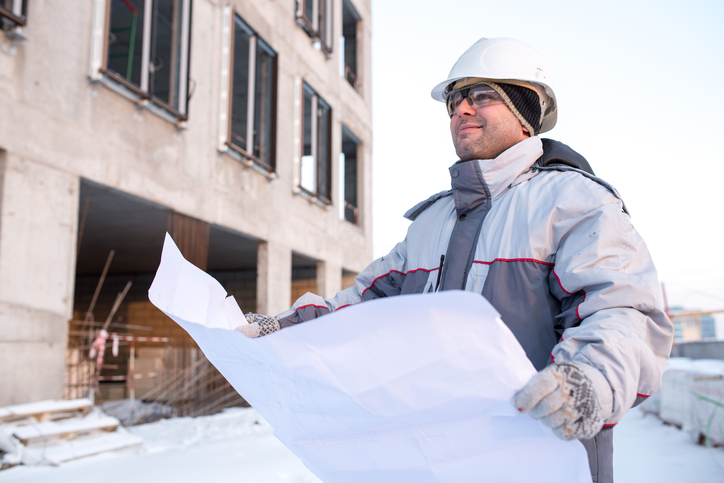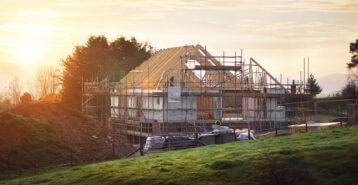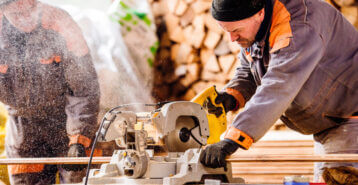As a contractor, you know all too well that keeping the construction site safe is a complicated process at the best of times. When Mother Nature decides to take control, however, worksite safety is exponentially more difficult.
Thankfully, there are a few tried and tested methods that construction professionals use to help keep themselves, their contractors, and their clients all out of harm’s way on a winter worksite. Here are our top winter worksite safety tips for home improvement professionals.

Identify winter hazards
The first step towards creating a safer workplace is assessing your worksite and identifying potential hazards. In the winter, the slow work season and frigid temperatures might make you a little less stringent than usual. However, the cold also creates more risks of injury, so it’s crucial to look out for several potentially dangerous situations, including:
- Surfaces that could become slippery due to water and ice
- Pathways that might be blocked by snow buildup
- Vehicles and equipment that could be damaged or rendered unusable due to exposure to cold weather, snow, and ice
- Continued exposure to cold resulting in hypothermia
In order to properly identify these hazards, we recommend that you complete several walk-throughs of your site—before, during, and after winter—in order to accurately predict, amend, and reflect on potential hazards and how they affect your worksite.
Set up a safety plan
Once you’ve identified the key hazards in your winter worksite, think about the various ways you can eliminate or minimize each risk. A worksite safety plan is essential—it will keep your employees safe, ensure that you comply with government regulations, and avoid costly lawsuits should any injury occur.
According to the Occupational Safety and Health Administration (OSHA), a construction worksite safety program should include the following information:
- Management commitment to injury and illness prevention
- Hazard identification and determination
- Hazard elimination and control
- Emergency response planning
- First aid and medical
- Training
- Recordkeeping and abatement verification
Depending on the size and type of worksite you run, some of these steps will vary, but the basic principles remain the same.
If employees happen to become injured by one of these hazards, make sure to fill out a complete and accurate incident report. Finally, check with your insurance company to see whether they have any further rules and regulations for worksite safety—you don’t want to get caught out due to noncompliance.
Maintain accountability
Setting up an effective worksite safety plan that makes employees and anyone who visits safe from harm is just the first step towards a safer workplace in the winter. By monitoring current safety plans and staying vigilant in looking out for new potential hazards, you will be able to keep yourself accountable for the safety measures you have in place.
Accountability isn’t just about employers making sure their sites are safe, however. A fair and well-functioning worksite works best when employees feel they can communicate their concerns and issues freely as well. By setting up regular safety training and making sure the lines of communication are open, your employees will trust that you will listen to what they have to say. Since your employees are the ones who will be working in these potentially dangerous conditions day in and day out, it’s essential that you take their requests on board and follow the proper protocol to keep them safe.
Stay aware
Health and safety plans for the workplace are only effective if they are constantly monitored. This will be especially important for your worksite over the course of the winter, since conditions can and do change at the drop of a hat. Regularly reviewing the procedures and precautions you have in place for your worksite will keep your employees safer and your company compliant.
Check Out the Types of Leads We Offer:
Home Improvement – Contractor Leads














